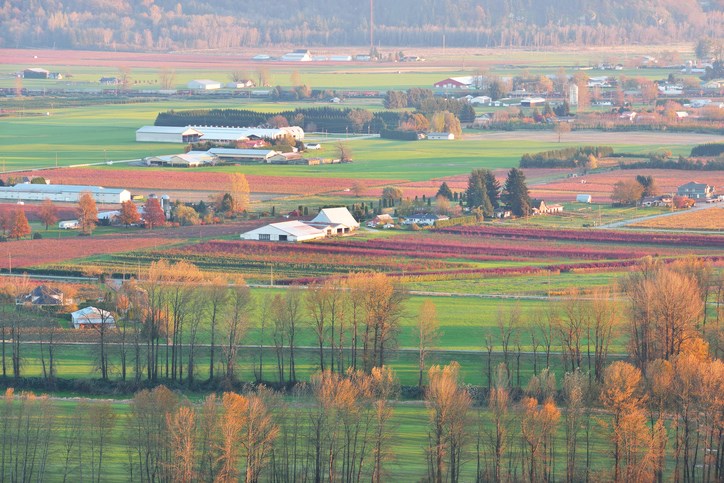High land values mean real estate accounts for a greater proportion of the total market value of farms in British Columbia’s Lower Mainland and on Vancouver Island than anywhere else in Western Canada.
Data from the 2021 Census of Agriculture indicates that 95 per cent of the value of farms in the two B.C. regions are tied up in real estate, versus a national average of 87 per cent.
Provincewide, real estate accounts for more than 93 per cent of the market value of farms.
This is well above levels seen in the Prairie provinces, where real estate typically accounts for between 84 and 86 per cent of farm value.
But the chief economist at Farm Credit Canada says there’s little benefit to farmers when it comes to borrowing. Instead, high asset values largely reflect local market dynamics.
“People like to make connections with regards to asset values and debt going up,” said J.P. Gervais, vice-president and chief agricultural economist at FCC. “It’s real, but correlation is not causation.”
The value of farmland has been going up across the country, thanks in part to demand from both farmers seeking additional land as well as recreational property buyers and investors. FCC reported an 8.3 per cent increase in farmland values nationally in its annual survey, released March 14. B.C. led Western Canada, with an 18.1 per cent increase. Manitoba ranked second with a 9.9 per cent increase, followed by Saskatchewan (up 7.4 per cent) and Alberta (up 3.6 per cent).
Since farms are operating assets, lenders typically look at their income-producing potential when gauging whether or not to finance the purchases.
“The primary driver of repayment is net income. Asset values are secondary for repayment,” Gervais explained.
While a farm’s real estate can serve as security, Gervais said most agricultural lenders tend not to engage in asset-based lending.
“As a farm lender, that’s not what we would consider a driver of borrowing capacity,” he said. “We really need to make sure that businesses that borrow money have the ability from an income standpoint to repay and service that debt.”
Gervais added that loan-to-asset value ratios haven’t changed, reflecting lenders’ ongoing emphasis on the ability of farms to service borrowing based on income. This is where strong commodity prices have fuelled buyer interest purchases despite drought conditions, further supporting asset values.
Buyer demand has continued, with the Re/Max Commercial Real Estate Report released May 30 noting strong demand for large parcels in Saskatchewan as war in the Ukraine has sent commodity prices soaring.
“The price of farmland is hitting record levels in areas like Estevan and Weyburn. Land that sold for $2,400 an acre recently is now seeing upward of $3,000. Eighty-six grain farms were listed for sale in April when normally, 300 would easily be available,” Re/Max stated. “One listing, a 309-acre grain farm, is priced at $15.9 million. The most expensive sale on record was for $32 million.”
B.C. farmland values have also increased thanks to additional demand from urban buyers seeking rural retreats.
“The demand from urban areas is definitely higher,” Gervais said of B.C. “That puts a little more pressure on land values.”



